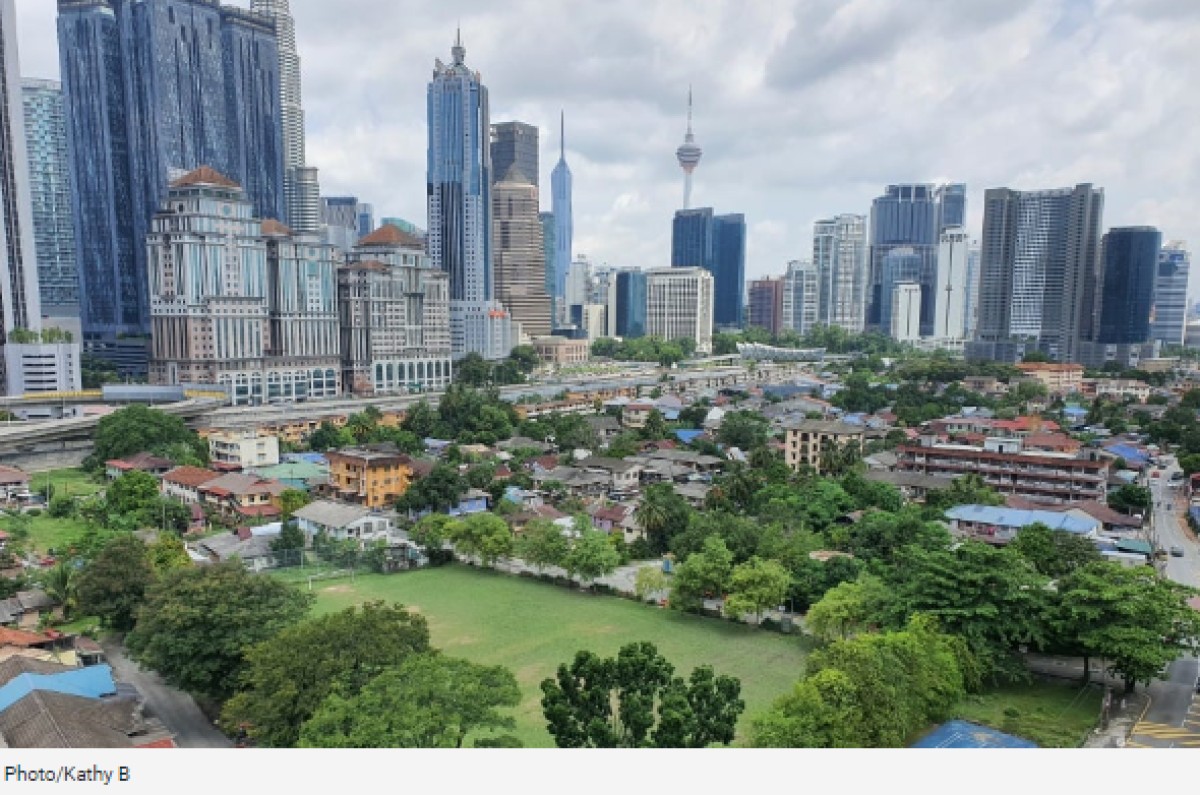News & Articles KLSP2040 identifies 139 KL sites for redevelopment over a 20-year period
KLSP2040 identifies 139 KL sites for redevelopment over a 20-year period
20 Nov 2023

KUALA LUMPUR: The recently unveiled Kuala Lumpur Structure Plan 2040 (KLSP2040) has identified 139 locations in Kuala Lumpur earmarked for potential redevelopment over the next 20 years.
The goal is to enhance the city's appeal as an investment destination and create a more attractive environment.
The redevelopment initiatives target brownfield areas with limited economic use, ageing industrial sites, and other locations influenced by investments in transit infrastructure and river conservation.
According to an industry insider, the potential redevelopment of the 139 locations in Kuala Lumpur could result in several billion ringgit in gross development value.
"I believe they are prime sites," he told NST Property..
Redevelopment efforts around transit zones are expected to be more intensive compared to other areas, involving mixed-use development activities to foster a more integrated environment.
KLSP2040 designates various transit zones for redevelopment, including Federal Cable, Jalan Berangan, Jalan Kenanga, Jalan Tiong Nam, Jalan Haji Taib, Jalan Alor, Jalan Raja Bot, Jalan Rahmat, Jalan Melayu-Jalan Masjid India, Jalan Raja Laut, Jalan Petaling, Jalan Inai, Jalan Maharajalela, and Jalan Talalla.
The redevelopment of brownfield sites, encompassing old public and private housing, markets, trading premises, and food courts, as well as residential, industrial, and commercial areas, aims to create sustainable and livable development.
The planned urban redevelopment emphasises detailed design plans for buildings, aspiring to achieve a more integrated, inclusive, and low-carbon built environment.
"Kuala Lumpur City Hall, under the guidance of KLSP 2040, has strategically devised plans for the city's development, envisioning Kuala Lumpur as a world-class city of the future and a sustainable hub providing the best for all residents and future generations," according to SM Goh, a town planner.
He expresses confidence that, if implemented effectively, KLSP 2040 will ensure Kuala Lumpur's long-term viability and prosperity over the next 20 years.
"The plan should be consistent with previous plans and adhere to accepted global standards of city strategy and planning. This is essential for ensuring that the city's identity and sense of place are clearly defined, as well as that preservation and promotion policies are in place," he told NST Property.
Communities, interest groups, geographical, biological, climate, heritage, culture, knowledge, and community activity are examples of these, he said.
Gazetted on October 19, 2023, KLSP2040 replaces the PSKL2020 and underscores economic, social, environmental, and cultural aspects through six primary goals: innovative and productive; inclusive, equitable, and livable; green, healthy, and vibrant; efficient mobility and environmentally friendly; as well as integrated and sustainable development.
The plan suggests that revitalising old cities and unused buildings is best achieved through injecting fresh investments to reactivate both the areas and functionalities of existing structures.
Notable areas identified for potential rejuvenation include Medan Pasar, Jalan Tangsi, Kuala Lumpur Railway Station, and Pasar Sungai Besi.
The goal is to enhance the city's appeal as an investment destination and create a more attractive environment.
The redevelopment initiatives target brownfield areas with limited economic use, ageing industrial sites, and other locations influenced by investments in transit infrastructure and river conservation.
According to an industry insider, the potential redevelopment of the 139 locations in Kuala Lumpur could result in several billion ringgit in gross development value.
"I believe they are prime sites," he told NST Property..
Redevelopment efforts around transit zones are expected to be more intensive compared to other areas, involving mixed-use development activities to foster a more integrated environment.
KLSP2040 designates various transit zones for redevelopment, including Federal Cable, Jalan Berangan, Jalan Kenanga, Jalan Tiong Nam, Jalan Haji Taib, Jalan Alor, Jalan Raja Bot, Jalan Rahmat, Jalan Melayu-Jalan Masjid India, Jalan Raja Laut, Jalan Petaling, Jalan Inai, Jalan Maharajalela, and Jalan Talalla.
The redevelopment of brownfield sites, encompassing old public and private housing, markets, trading premises, and food courts, as well as residential, industrial, and commercial areas, aims to create sustainable and livable development.
The planned urban redevelopment emphasises detailed design plans for buildings, aspiring to achieve a more integrated, inclusive, and low-carbon built environment.
"Kuala Lumpur City Hall, under the guidance of KLSP 2040, has strategically devised plans for the city's development, envisioning Kuala Lumpur as a world-class city of the future and a sustainable hub providing the best for all residents and future generations," according to SM Goh, a town planner.
He expresses confidence that, if implemented effectively, KLSP 2040 will ensure Kuala Lumpur's long-term viability and prosperity over the next 20 years.
"The plan should be consistent with previous plans and adhere to accepted global standards of city strategy and planning. This is essential for ensuring that the city's identity and sense of place are clearly defined, as well as that preservation and promotion policies are in place," he told NST Property.
Communities, interest groups, geographical, biological, climate, heritage, culture, knowledge, and community activity are examples of these, he said.
Gazetted on October 19, 2023, KLSP2040 replaces the PSKL2020 and underscores economic, social, environmental, and cultural aspects through six primary goals: innovative and productive; inclusive, equitable, and livable; green, healthy, and vibrant; efficient mobility and environmentally friendly; as well as integrated and sustainable development.
The plan suggests that revitalising old cities and unused buildings is best achieved through injecting fresh investments to reactivate both the areas and functionalities of existing structures.
Notable areas identified for potential rejuvenation include Medan Pasar, Jalan Tangsi, Kuala Lumpur Railway Station, and Pasar Sungai Besi.
Source: NST.com.my
Latest Posts
-
Highest Bidder Strikes Gold at NCM Co November Auction Carnival 2025
-
November Auction Carnival 2025 Returns — Nearly 600 Properties Up for Grabs!
-
SkyWorld raih emas pertama di Anugerah ESG The Edge Malaysia 2025
-
NCM Co Celebrates 38 Years of Auction Excellence with 8 Hours of Non-Stop Property and Vehicle Bidding at the July Auction Carnival 2025
-
Celebrating 38 Years of Auction Excellence with Over 700 Units Up for Grabs at July Auction Carnival 2025